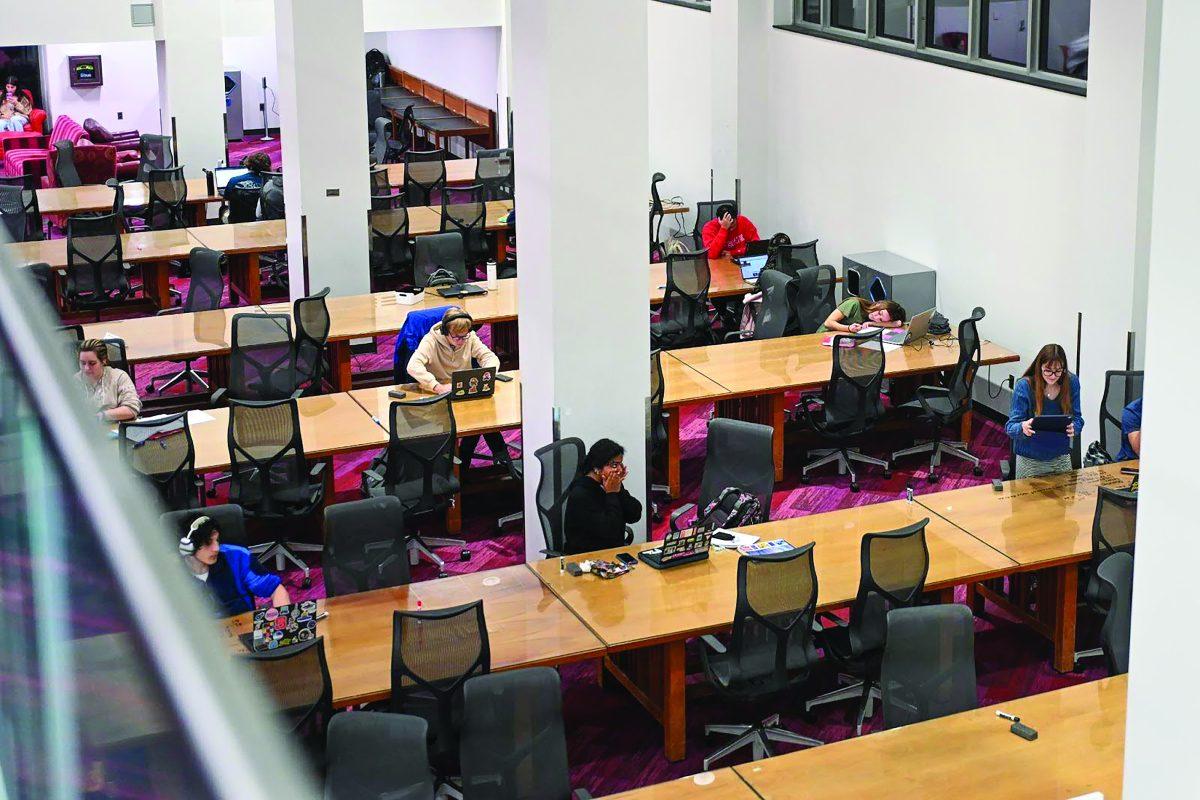Pilates and yoga can be intense each on its own, but what if you heat it up a little bit?
Bikram yoga — also called “hot yoga” — does just that. One of the hottest new trends in exercise, it involves 26 yoga poses over 90 minutes in a room heated to 105 degrees, creating a workout that’s sure to get the blood pumping and the sweat flowing.
Hot yoga requires an immense amount of effort, especially for a beginner. While wriggling into poses that seem physically impossible at first, there is the added element of heat and sweat — i.e. perspiration flowing like never before — taking difficulty to an entirely new level.
But some like it hot
Whitney Parker, a junior in communication, fresh out of her first hot yoga class at Bikram Yoga-North Raleigh found the experience enjoyable and unique.
“I liked it because it was challenging, but you only have to push yourself as far as you feel comfortable,” Parker said.
For Parker, the heat made the workout much more intense. “It’s like working out in a sauna,” she said.
The practice of Bikram yoga and the Yoga College of India was founded by Yogiraj Bikram Choudhury. After experiencing a knee injury in a weight-lifting accident, Choudhury was told he would never walk again. Defying the odds, he threw all of his energy into his yoga training for six months and found his knee totally restored.
Some, in fact, need it hot
Betsy Cottam, a junior in fashion development and product management who has suffered from back problems, found her first session of hot yoga to be very healing.
“The heat and the postures we did strengthened and worked my back muscles in a way that I can’t at the gym,” Cottam said.
It was for this very reason Choudhury developed his yoga sequence that eventually evolved into the Bikram beginning yoga class that is creating hype throughout the nation. He drew upon his own experience of pain and healing to help others achieve the sense of balance he gained after his knee healed. The key lies in the use of heat to increase the range of motion and flexibility for muscles to receive the full benefits.
Raleigh formerly offered Bikram yoga in two different locations — Bikram’s Yoga College in the Ridgewood Shopping Center off Wade Avenue and Bikram Yoga-North Raleigh off Strickland Road. However, Bikram’s Yoga College in Ridgewood recently closed.
Paul Hurschmann, director of Bikram Yoga-North Raleigh, has dedicated himself to the practice of Bikram yoga now for nearly five years and to spreading the joy he has found in the practice of Bikram yoga to the surrounding community.
Because this practice is directed towards beginners, the atmosphere is less intimidating. Any feelings of unease fall by the wayside when the first-time student realizes each individual is entirely focused on themselves and their meditation rather than the surroundings.
“It is designed for beginners, for Westerners, who have never practiced yoga before,” Hurschmann said. “It’s very accessible to all ages, sizes and shapes.”
A Bikram yoga class begins with a series of breathing exercises to warm up the body. This set of deep breathing, called Pranayama, is especially crucial to beginners learning how to properly use their breath. The class then moves into the first segment of standing poses followed by the floor series. By the end of a session, the beginner student is shocked at just how elastic their muscles have become.
“It’s 90 minutes in which you are forced to focus on your breathing; and [it] takes you to a state you won’t find anywhere else,” Hurschmann said. “It energizes your body, mind and spirit — you are getting a complete workout.”
Sinking into the 19th pose, Dhanurasana (laying on the stomach while holding the ankles and arching the back), which appears to be an excruciating stretch, suddenly becomes possible due to the intensity of the heat. The session ends in the Savasana pose (laying flat on one’s back with arms outstretched and palms facing the ceiling) that is said to be the most beneficiary of all poses involved in Hatha yoga.
What keeps individuals so dedicated and always coming back for more is the feeling one walks away with after completing a class. Hurschmann found through his own practice of Bikram yoga that he became more focused and relaxed, not to mention in better physical shape. He feels the younger generation will benefit from picking up yoga now.
“A lot of us find this when we’re in our 50s and 40s but wish we had found it in our 20s,” Hurschmann said. “If you start when you are young and healthy you can maintain it all of your life.”
Monica Adamczyk, a senior in communication and sociology, is lucky to have found this form of exercise at the end of her sophomore year and continued with it after her physical therapist recommended stretching to heal a pulled muscle. Adamczyk found her muscle completely healed after only a month.
“It’s always on the car ride home that you realize how good you feel,” Adamczyk said. “You’re so relaxed, with all the stress and tension from being in classes and working at your computer is gone.”
Even though her muscle is now healed, Adamczyk can’t resist continuing the practice because of the amazing feelings after the workout.
Adamczyk also recommends Bikram yoga because of the unique workout it gave her body.
“I run a lot, but when you run you find your muscles are tight and you are tired after your workout — you just want to relax on the couch,” she said. “But after yoga, you want to keep on going because of all the energy you have.”




